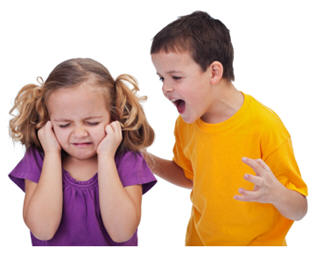Sibling Bullying: What's the Big Deal?
CLEMSON, SC; September 23, 2013—Sibling bullying is a type of violence that is prevalent in the lives of most children but little is known about it, researchers say.
Clemson University psychology professor Robin Kowalski said the phenomenon has been overlooked.
Kowalski and and co-author Jessica Skinner explored the extent to which sibling bullying is viewed to be normal and looked at the perceived differences between victims and perpetrators. They recently published their findings in the Journal of Interpersonal Violence.
The purpose of the study was to profile sibling bullying by examining prevalence rates, the extent to which siblings perceive sibling bullying to be normative and victim–perpetrator differences in perceptions of sibling bullying.
Seventy-five percent of the participants in the study reported being bullied by a sibling and 85 percent reported bullying a sibling.
"Normally in bullying research, percentages are significantly lower for perpetration than victimization," said Kowalski. "Notably, in this research on sibling bullying, percentages were higher for those willing to admit to perpetrating sibling bullying, suggesting that [they felt] it wasn't all that big a deal."
The findings were supported by additional data showing that, among most sibling pairs, there is a norm of acceptance about sibling bullying.
Victims and perpetrators did not evaluate instances of sibling bullying the same way. Victims evaluated instances of sibling bullying more negatively than perpetrators evaluated the same instances.
Kowalski uses these findings to increase awareness of an understudied phenomenon.
"People tend to think that siblings are going to tease and bully one another; just goes with the territory," Kowalski said. "Minimizing the behavior in this way, however, fails to examine the consequences that sibling bullying can have for the relationship between the siblings involved, something that most definitely needs additional research."
Kowalski suggests annual checkups at the pediatrician's office as a venue to increase awareness about bullying.
"Annual checkups with a pediatrician would certainly assist with increasing awareness about and preventing sibling bullying," said Kowalski. "It's a great forum for professionals to educate and talk to parents about what is happening with their children regarding bullying."
PEYTON BULLARD
ARTICLE:
"Profiles of Sibling Bullying," Jessica A. Skinner and Robin M. Kowalski. Journal of Interpersonal Violence, May 2013; vol. 28, 8: pp. 1726-1736., first published on January 24, 2013
RELATED ARTICLES:

